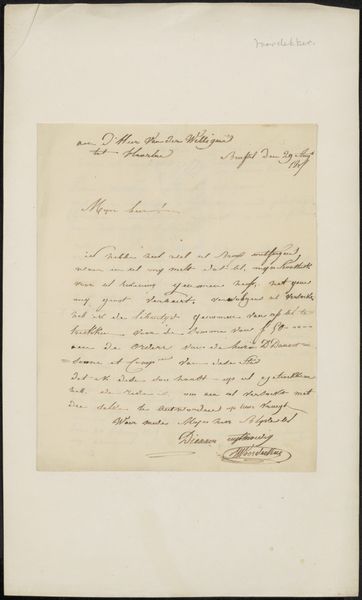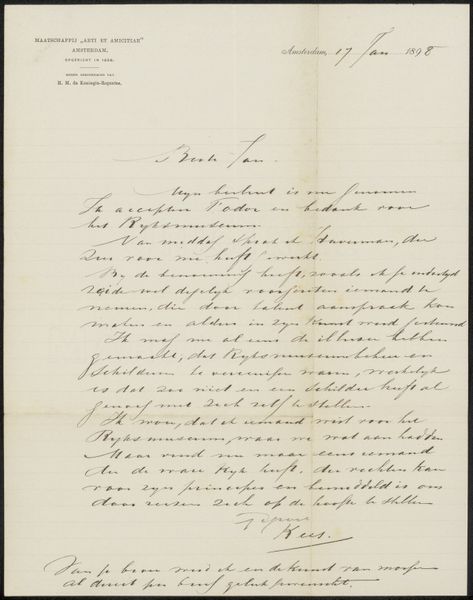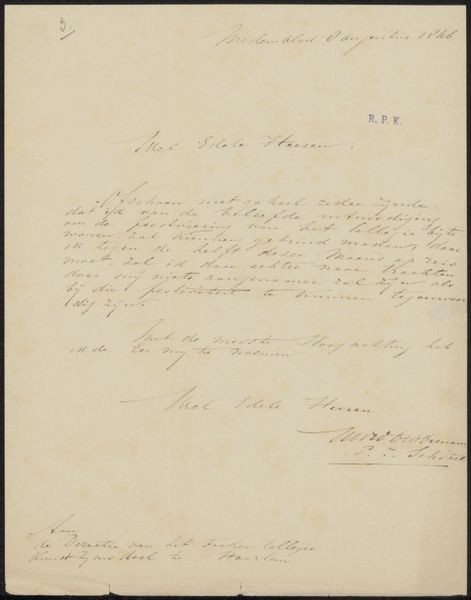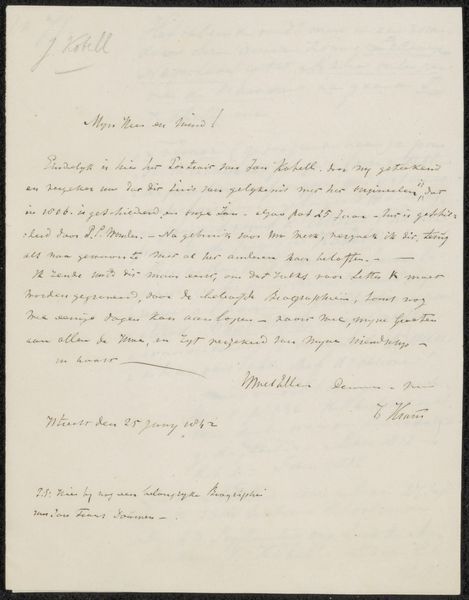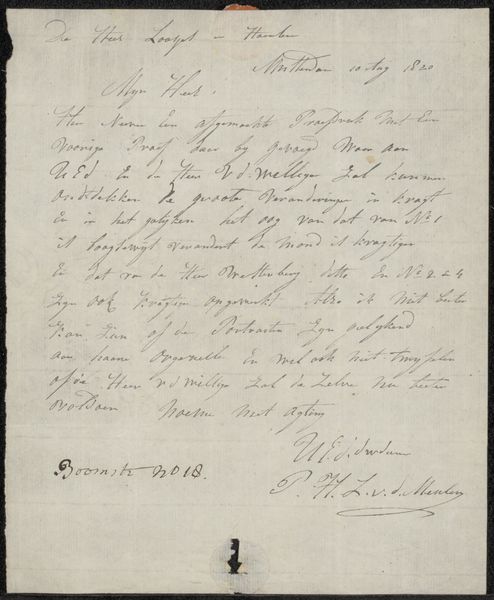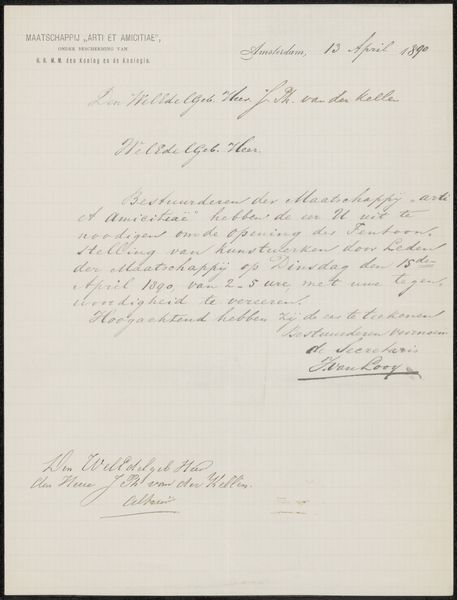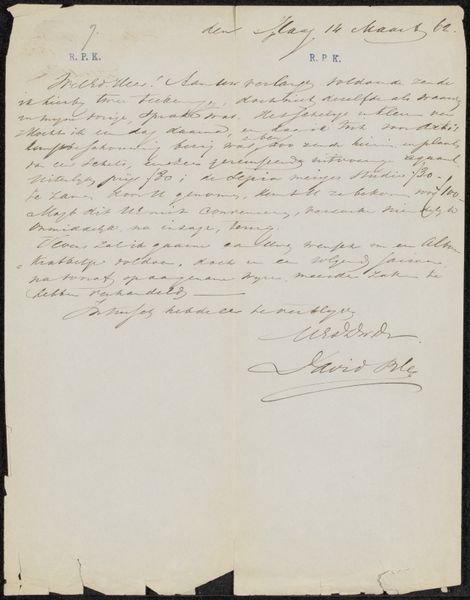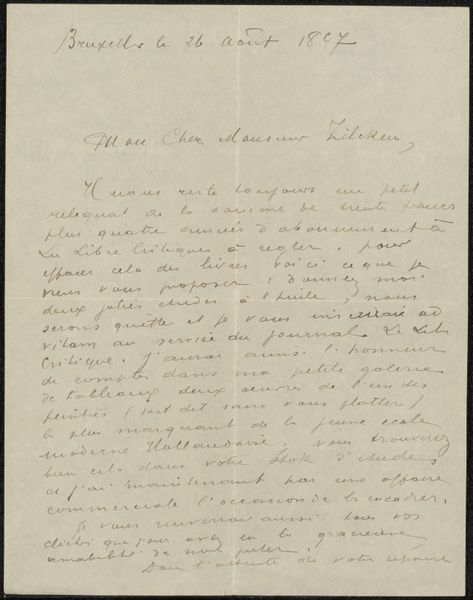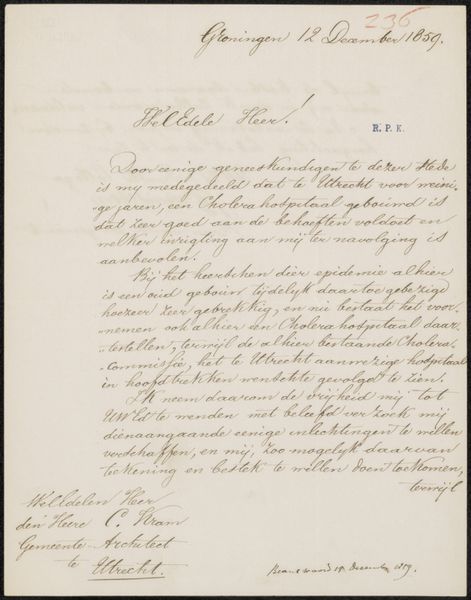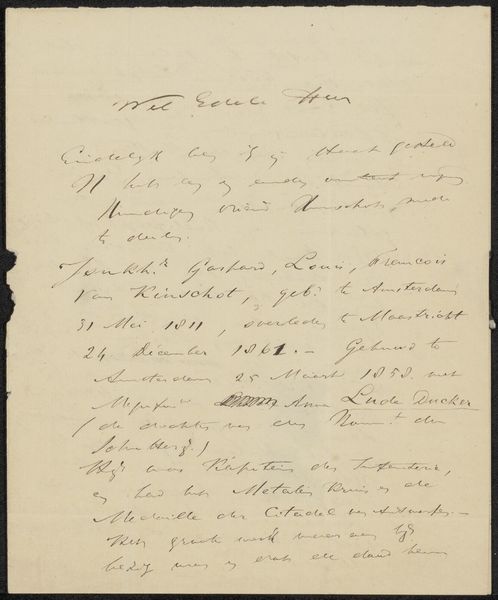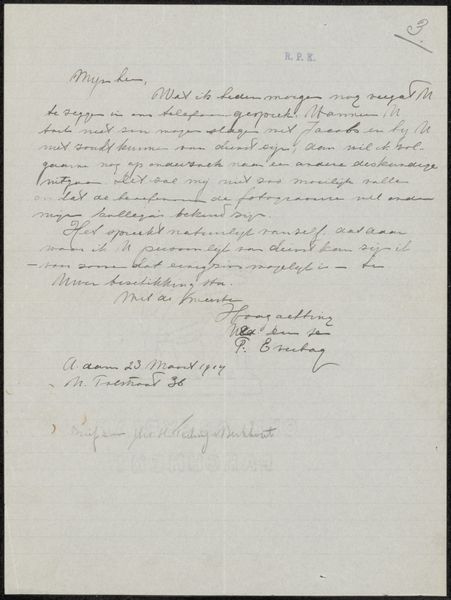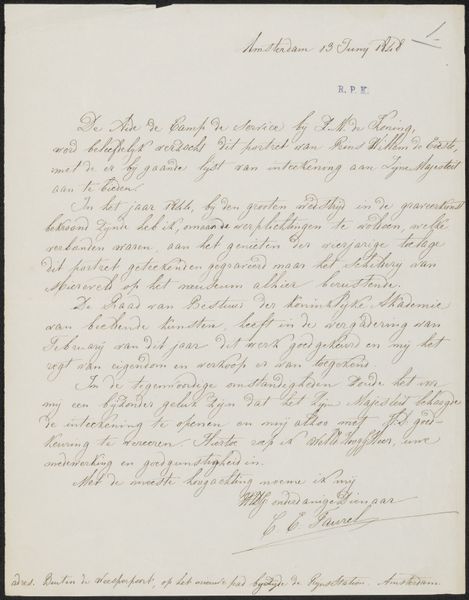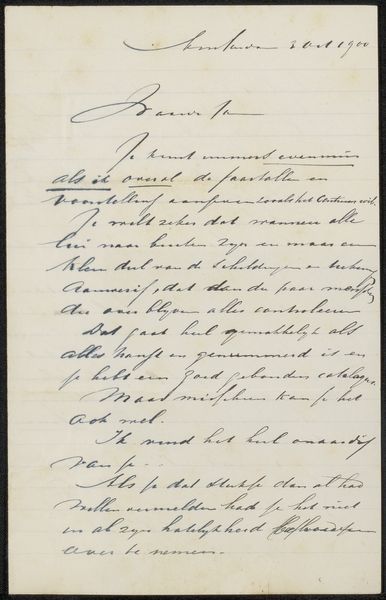
drawing, paper, ink, pen
#
drawing
#
ink paper printed
#
hand drawn type
#
paper
#
personal sketchbook
#
ink
#
pen-ink sketch
#
pen work
#
pen
#
calligraphy
Copyright: Rijks Museum: Open Domain
Editor: Here we have "Brief aan Philip Zilcken," possibly from 1897, created by Maurits Wagenvoort. It's ink on paper, essentially a handwritten letter. It strikes me as very personal and intimate. What layers of meaning do you think a letter like this holds? Curator: It's a fascinating artifact. The act of writing itself, of forming these looping letterforms with ink, becomes imbued with intent and emotional charge that digital text often lacks. Notice how the penmanship itself contributes to the aura. How do you feel the act of handwritten communication ties into cultural memory? Editor: I guess it feels more tangible, more like a piece of the person is still there in the writing. You can see the pressure of the pen, the way they formed each word. Does that connect with the recipient, Philip Zilcken, as well? Curator: Precisely. And Zilcken, as the recipient, becomes a co-creator of this meaning. It's not simply the *content* of the letter, but the shared understanding of the language, the calligraphic style, the nuances of address. These were powerful social signals at the time, reflecting the relationship between writer and reader. Editor: So, it’s like the handwriting itself almost functions as a symbolic language. What about the visual aesthetic? How would the receiver register that symbolic form? Curator: Consider the care taken, or perhaps the haste. These visual cues become ingrained in our collective memory of communication and the nuances within those acts. It's more than just reading words, but a whole performative act captured on paper. What did you learn from Wagenvoort’s artifact? Editor: I now have an entry point into considering how the choice of materials and script transforms the tone and texture of what the words mean. Thank you.
Comments
No comments
Be the first to comment and join the conversation on the ultimate creative platform.
